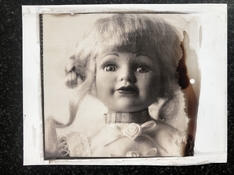alecrmyers
Member
- Joined
- Sep 24, 2009
- Messages
- 155
- Format
- Large Format
Try also https://onyxmet.com/index.php?route=product/product&product_id=1252
Here's an Etsy item:

 www.etsy.com
www.etsy.com
You can try sodium hypophosphite too (hard to get where I live.)
Alternatively, take a leaf from our palladium/platinum printing colleagues - maybe try a pinch of ferric oxalate with the palladium chloride solution and expose to UV (or leave in the sun). I would still use some PVP as a capping agent. Oxalic acid might work too.
Here's an Etsy item:

Sodium Borohydride 99% - Etsy
This Cosmetic Bags item by JanuszexPL has 38 favorites from Etsy shoppers. Ships from Poland. Listed on Sep 4, 2025
You can try sodium hypophosphite too (hard to get where I live.)
Alternatively, take a leaf from our palladium/platinum printing colleagues - maybe try a pinch of ferric oxalate with the palladium chloride solution and expose to UV (or leave in the sun). I would still use some PVP as a capping agent. Oxalic acid might work too.
Last edited:







